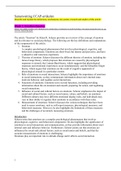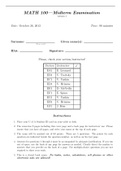Summary
Summary Clinical Child And Adolescence Psychology
- Course
- Institution
De samenvatting bestaat uit al deze artikelen: Lecture 1: Emotion Theories (Carolien Rieffe) Scherer, K.R. (2000). Emotion. In M. Hewstone & W. Stroebe (Eds.). Introduction to Social Psychology: A European perspective (3rd. ed., pp. 151-191). Oxford: Blackwell. Lecture 2: Emotion Commun...
[Show more]




